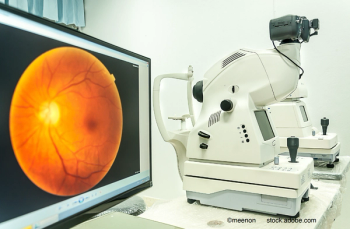
NIH scientists develop new surgical technique for grafting tissue in the retina
The new surgical technique incorporates a new surgical clamp that maintains eye pressure during the insertion of two tissue patches in immediate succession while minimizing damage to the surrounding tissue.
A new surgical technique for implanting multiple tissue grafts in the eye’s retina has been developed by National Institute of Health (NIH) scientists.1 This new approach may help advance treatment options for
AMD, a leading cause of vision loss among older Americans, is a disease in which the light-sensitive retina tissue at the back of the eye degenerates. Using patient-derived stem cells, researchers have been testing therapies for restoring damaged retinas with lab-grown grafts of tissue.
The new surgical technique incorporates a new surgical clamp that maintains eye pressure during the insertion of two tissue patches in immediate succession, while minimizing damage to the surrounding tissue. Up until this new research, surgeons have only been able to place one graft in the retina, which limits the treatment areas of patients.
Scientists used this new surgical technique in animal models to compare two different grafts placed sequentially in the same experimentally induced AMD-like lesion. One graft consisted of retinal pigment epithelial (RPE) cells grown on a biodegradable scaffold, while the second graft consisted of just the biodegradable scaffold to serve as control.
Using artificial intelligence to analyze retinal images post-surgery and compare each graft, scientists observed the RPE grafts promoted the survival of photoreceptors, while photoreceptors near scaffold-only grafts died at a much higher rate. Another finding included being able to confirm for the first time that the RPE graft also regenerated the choriocapillaris, which supplies oxygen and nutrients to the retina.
Reference:
1. NIH scientists test in an animal model a surgical technique to improve cell therapy for dry AMD. National Institutes of Health (NIH). Published May 22, 2025. Accessed May 27, 2025. https://www.nih.gov/news-events/news-releases/nih-scientists-test-animal-model-surgical-technique-improve-cell-therapy-dry-amd
Newsletter
Keep your retina practice on the forefront—subscribe for expert analysis and emerging trends in retinal disease management.















































